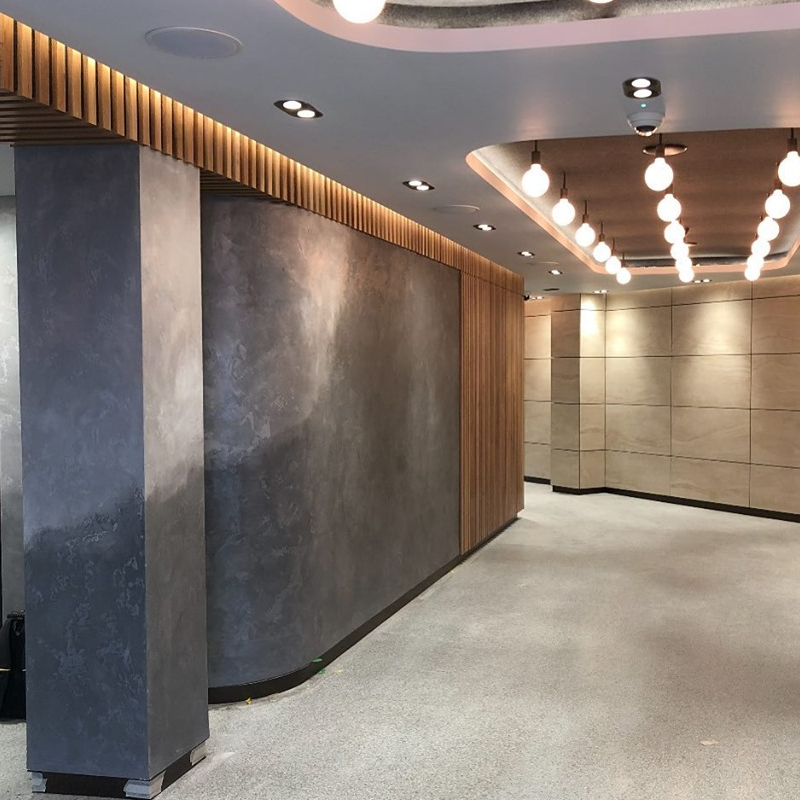
21 Oct Which polished plaster solutions are the most durable?
Polished plaster is a very durable material. It has to be, since it is designed to be a decorative feature on its own without a coat of paint or wallpaper. It is unprotected, just as a stone wall is. And yet, polished plaster can hold its colour for decades without peel or fade even when exposed to sunlight and water.
Key to its durability is its composition. Polished plaster is composed of lime putty and natural stone dust. The stone content is quite high, so when the plaster sets it sets hard for a very durable finish. It isn’t quite as hard as solid marble, but it is hard enough so as to be imperceptible from the real thing by touch.
Polished plaster is also known as Marmorino, Spatulato, Marble plaster, Italian plaster or Stucco Veneziano. These are traditional names for the same thing — a plaster made with a lime putty, stone dust and natural pigments.
However, there is another more modern type of polished plaster out there. This is also composed of lime putty and natural stone dust, but it also contains resins or acrylics (plastic dust). This plaster is easier to apply and tends to dry faster.
The final appearance of plasters containing resin or acrylic is very similar to true Venetian plaster. In terms of durability, these plasters are also slightly superior because the resin or acrylic acts as a bonding agent. This fuses the plaster very solid with a higher degree of flex, giving the finish greater resistance to cracking over time.
One of the benefits of some resin and acrylic polished plasters is they do not need sealing, whereas traditional polished plasters do. This is only a benefit with regards to the workmen and time savings, though. Both offer the same functionality.
Unlike wallpaper, Venetian plaster will never strain or tear. And unlike paint, it will never fade or flake. It is more durable than traditional plaster because of the natural stone, which gives the finish great hardness.
To give you an example of the durability of polished plaster, there are buildings in Italy dating back several centuries with rooms finished with Venetian plaster – and the walls look as good as new. The material actually dates back to Roman times, and there are Roman ruins with Venetian plaster adorning structures across Europe. Pompeii is a decent example of a place where ancient Venetian plaster can be found.
Ultimately, if you are interested in polished plaster solutions for your own project, with respect to durability, you can’t go wrong with a traditional Venetian plaster or a more modern plaster with an acrylic or resin content. The only thing to remember is a traditional plaster will need sealing, whereas a more modern material may not need sealing. Both offer similar durability and will last for decades.
If you would like advice about which plaster to choose, we’re here to help. Please call us on 0772 548 866 or send us a message.




No Comments